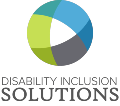Implementing a universal design strategy into an organization’s built environment
Organizations today face numerous challenges when planning for the diverse needs of users who utilize their campuses and spaces. Today’s dedication goes beyond the Americans with Disabilities Act (ADA) which mandated equal access for all. Today, we hold organizations at a higher standard and demand equality for all.
Universal Design is dedicated to designing spaces where everyone is given what they need to succeed. While grounded in ADA, it offers far more potential for inclusion. Universal Design dares us to look further than differences in physical and cognitive abilities or disabilities to create an environment that was designed with everyone in mind. In short, Universal Design has the potential to make daily and work-life healthier, more productive, and friendlier, and requires continuous improvement toward the ultimate goal of full inclusion. We see Universal Design as a process that enables and empowers a diverse population.
Organizations that are implementing Universal Design strategies on their campuses, ultimately see it as a tangible benefit and a return on their investment. Leaders in public and private organizations recognize the importance of designing for diversity in creating inclusive workplaces. They realize that executing a skillfully designed environment allows individuals and teams to flourish by eliminating physical and social barriers. Finally, Universal design improves safety measures by minimizing hazards that lead to accidents, lost productivity, and related expenses.
Going forward, using the GUDC guidelines as a reference, we believe that a program for Universal Design certification should be implemented with the following key concepts:
- Utilize our custom UD checklist identifying strategies and priorities used as the keystone document
- P1 (strategies that are no or low cost with high impact to the user and organization)
- P2 (strategies that are higher cost with relative positive return and impact to the user and organization)
- Prerequisites for certification
- A UD professional is engaged with the project beginning with the programming phase
- The UD checklist is implemented during the programming phase with P1 and P2 priorities established (this document will be monitored during the design and construction phases of a project and used to confirm that agreed upon strategies were successfully carried out to completion)
- Universal Design levels of certification for new buildings
- UD gold – awarded with 100% compliance of P1 and P2 strategies
- UD silver – awarded with 100% compliance of P1 strategies and 50% of P2 strategies
- UD bronze – awarded with 100% of P1 strategies
- Universal Design levels of certification for existing buildings (understanding that the UD checklist allows an Owner to make strategic choices from a framework of strategies, while recognizing the context in which design takes place rather than imposing an absolute standard to every situation)
- UD existing building – awarded with 100% of agreed upon P1 and P2 strategies
- Key process steps
- UD professional on board at the beginning of the project
- Utilize the UD checklist
- Receive buy-in from the Owner/Organization and UD professional on UD strategies to implement into the design
- Establish post-occupancy measures to be reviewed at one-year post occupancy
- UD professional monitors the process and communicates intent to project stakeholders, including the Owner’s team, design professionals, construction team, vendors and suppliers
- Upon successful completion of fulfilling the agreed upon checklist, the UD professional will recommend certification to the GUDC
- The GUDC will grant certification at the appropriate level and provide the Owner with a plaque
- Celebrate together
- The Owner and GUDC conduct a one-year post occupancy review to evaluate how the building is performing against UD measures. Identify changes and innovation, as a continual improvement/quality result to inform future projects.





0 Comments